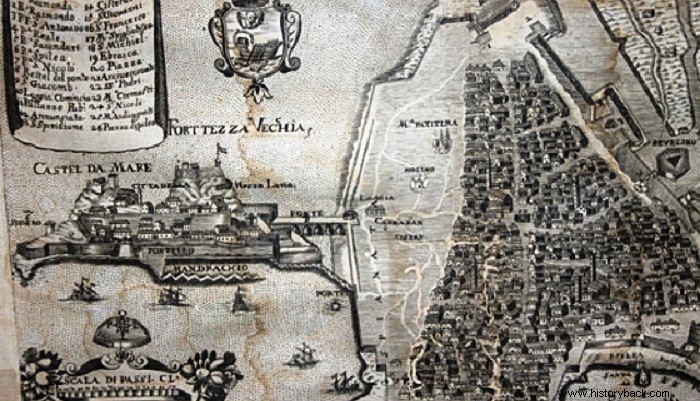
In 1537 the Turks, under Suleiman, the so-called "magnificent", threatened the Empire and Venice again with Christian France as an ally. The unholy alliance between the French and the Turks was aimed at the destruction of the Habsburg empire, but unfortunately it also affected the Greeks...
The unholy allies had drawn up grand plans. Their basic plan called for a Turkish attack on Spanish-Hapsburg possessions in southern Italy and a French attack on northern Italy. Suleiman would gather 300,000 men whom he would pass to Italy and from there they would literally drown all of Europe... The opportunism of the French king Francis I would turn out to be a gravestone of European-Greek-Christian civilization if Corfu did not exist...
Suleiman Eforma
Suleiman began to concentrate his forces in Avlona in present-day Albania. He went there himself, accompanied by the French ambassador Jean de la Faure. The Turkish dynast collected 100 galleys there. This fleet, under the notorious murderer Hairedin Barbarossa, raided southern Italy sowing death and transporting 10,000 innocents who were sold into slavery. However, the French king was involved in conflicts in the Low Countries and could not go to Italy.
So Suleiman also left the original plan and decided to conquer Corfu which was then owned by Venice. The Turkish sultan assembled 320 ships opposite Corfu. The Turkish ships began the bombardment of the city and the fortress of Corfu and on August 26, 1537 they landed 25,000 men on the island. A few days later a French squadron also arrived on the island with 12 warships to reinforce the Turks. It was led by Admiral de Saint Blanchard.
Siege
Suleiman set up his headquarters across the street, in Sayada, and the siege was taken over by Barbarossa . The defenders numbered only 4,000 men, half of whom were Greeks and the other Venetians and mercenaries. The defenders, unable to oppose the Turks in an open field, closed themselves in the forts.
The Turks occupied the suburbs outside the walls and burned and looted everything. Many Greeks were then killed or exiled. The Turks went through the whole island with fire and iron. Barbarossa then set up three artillery emplacements on as many hills opposite the city walls and began the cannonade. The Turks faced strong resistance at the castle of Angelos and retreated without action.
The Turkish attacks against the city also failed as the Turkish artillery failed to create a breach in the strong fortifications. And the defenders carried out successful exits. "... insults and attacks are also scornful of the Turks as they come forward, while they are lying and their heads are suspended like swords...", says the eyewitness Nikandros Noukios.
Humiliation retreat
The weather also made it difficult for the Turks which rapidly worsened with the outbreak of terrific storms. As a result, an epidemic broke out in the Turkish camp. Faced with the stalemate, the French admiral proposed to his Turkish allies to leave Corfu and attempt, together, a new attack on Italy.
However, Suleiman was disappointed by the failure and refused. Defeated, he simply ordered the siege of Corfu to be lifted, as it was. The heroism of its defenders, but also rains had saved Corfu. Turks and French left the island in mid-September , but dragging with them many unfortunate Greeks who would soon be sold in the slave markets. It is worth noting that the French ambassador also died from the disease in the Turkish camp.
